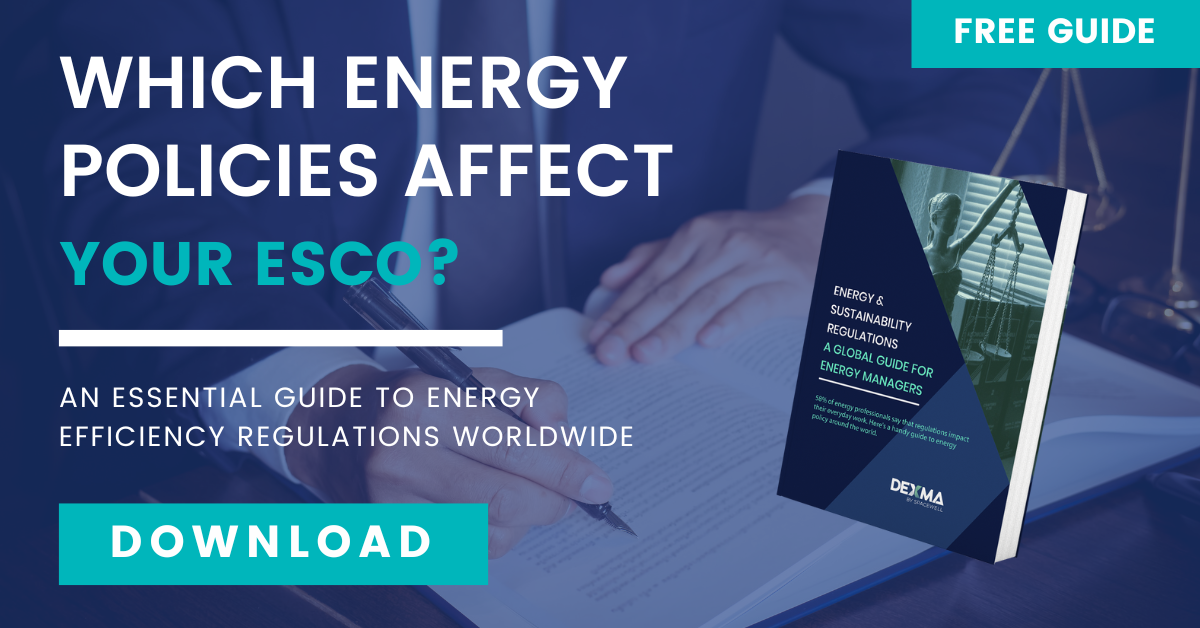Landlords and energy managers for commercial buildings in the UK, pay attention:Minimum Energy Efficiency Standards (MEES)are about to come into force with major consequences for your business. As of April 1st 2016, all residential tenants already havereques的权利t energy efficiency improvementsto their properties. And starting in April 2018, only properties with an energy performance rating of“E” or abovewill be legally rentable – that goes for commercial buildings too!
Pretty significant changes, right? Yet surprisingly,two thirds of UK landlords are totally unawareof these new energy efficiency rules, even though they carry non-compliancepenalties of up to £150,000. Tolearn more about how these changes will affect the UK commercial property rental sector, read on!
1. What is MEES?
Theminimum energy efficiency standard (MEES)was introduced in March 2015 by the Energy Efficiency Regulations (Private Rented Property) (England and Wales).
The MEES Regulations originate from the Energy Act of 2011, which contained the previous coalition government’s package of energy efficiency policies including the now defunded Green Deal. The Energy Act 2011 contains a number of provisions that will affect property owners. The most significant of these is MEES, which aims to improve the energy efficiency of the most energy inefficient properties. MEES also contributes to theUK legislative targets of reducing CO2 emissionsfor all buildings to around zero by 2050.
2. Which buildings are affected by the minimum energy efficiency standards?
事业心将适用于新的租赁和租赁续签on or after April 1st 2018, the property owner will need to ensure that the property meets MEESbeforethe lease is granted. However as of 1 April 2023 all privately rented property will be required to meet MEES.
That means it will be illegal to let commercial and residential properties with Energy Performance Certificates (EPCs) with a rating of F or G, the lowest two EPC ratings.
Buildings that MEES does NOT apply to include:
- Those not required to have anenergy performance certificate (EPC), such as: non-residential agricultural buildings, industrial sites and workshops, temporary properties, etc.
- Buildings in which the EPC is more than 10 years old
- Short lettings (6 months or less) or tenancies of more than 99 years.
According to the consultancyEnvironmental Economics, 20% of commercial properties had EPC ratings of F and G in 2014. Unsurprisingly, London is most affected by MEES legislation, with the highest percentage of properties achieving below-E ratings across all sectors. Recent figures released by the DCLG estimate that 25% of residential and commercial properties across England and Wales hit or fall below Minimum Energy Efficiency Standards.
3. What are the key dates I should remember?
There are two key dates you should keep in mind:
- April 2018is when the MEES regulations will be enforced on granting new leases, as well as lease renewals.
- April 2023: MEES will apply to ALL privately rented property.
The regulatory scope of MEES is expected to expand over the next 5 years. Check out the infographic below for a more detailed timeline and more key dates:
4. Are there any exemptions?
You can also be made exempt from MEES if you are able to demonstrate one of the following:
- You have carried out all cost-effective energy efficiency improvements
- An independent surveyor judges that measures identified by the Green Deal or another government scheme are not cost effective e.g. devalue the property by 5% or more, raise the EPC rating above F, etc.
- If third-party consent is not available despite reasonable effort. A third party could mean a tenant, superior landlord or planning authority.
Keep in mind that the above exemptions are likely to be time-constrained, so make sure todouble check with your local energy services professionalif you are in doubt.
5. What about penalties for non-compliance?
MEES Regulations will be enforced byLocal Weights and Measures Authorities (LWMAs), who have the power to impose civil penalties. To find your nearest authority, you can enter your postcodehere.
Non-compliance penalties are linked to the rateable value of the property (from 1o-20%depending on how long MEES is breached). They begin at £5,000, butcould reach as high as £150,000. With such high stakes, it’s clear that a complete understanding of energy efficiency is required for your property in order to ensure you are meeting MEES.
Property owners and facility managers in the UK should act immediately by commissioning anup-to-date Energy Performance Certificatein order to first identify the current rating of their building(s) as it may have changed over time. Based on that information, they should start looking intoenergy saving opportunities.
Not working in the UK? Make sure you are updated with the minimum energy efficiency requirements in your city, region and country! Check out ourfree-to-download eBookon global energy efficiency regulations to find out where to start:



